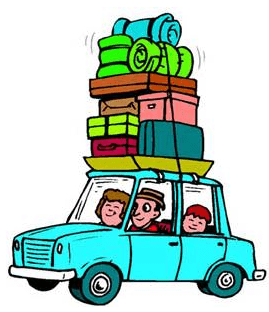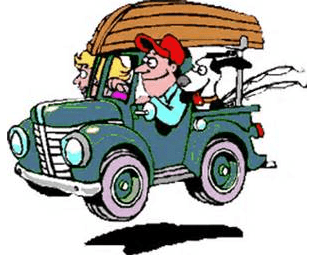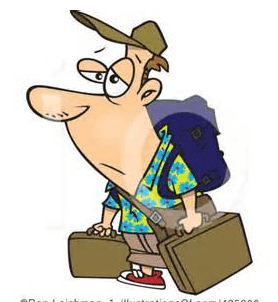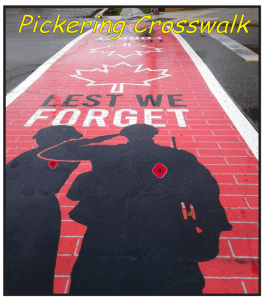Original article written by Mark Richardson, Toronto Star
March 1, 2014
 March Break is just a week away and, thanks to the massive amounts of snow we’ve had dumped on us, families are more desperate than ever to get away.
March Break is just a week away and, thanks to the massive amounts of snow we’ve had dumped on us, families are more desperate than ever to get away.
Many will resort to the time-honoured tradition of a road trip to Florida. If such a trip is on your agenda, here are some tips that will make it one to remember.
1. Plan ahead, within reason
It’s 2,000 kilometres and about 24 hours of driving to Orlando (four hours more to Miami), so planning is crucial. How long do you want the drive to take?
If you’re trying to do it in one day to maximize your time in Florida, arrange to split the driving and make sure the person who drives at night gets some sleep during the day. It’s safest to leave in the evening, so the first driver can sleep at home before taking the wheel. If you leave in the morning, take earplugs and eyeshades along so your second driver can get some sleep. If you’re taking two days for the drive, be sure to book a place to stay at the halfway point (if you’re leaving from Toronto, that would be mid West Virginia). Most motels and hotels sell out on a weekend soon after it gets dark, or only have their most expensive rooms still available.
Three days (or more) is best — although your children would have to take more than a week off school — because it allows a far more pleasant drive and lets you avoid travelling by night. You can leave after breakfast at 9 or 10 a.m., make stops as you wish, and find accommodations between 5 and 6 p.m. when there’s still lots of choice.
For the return drive, plan to arrive home a full day before you have to be back at school or work That’ll give you some precious relaxing time and some cushion in case you hit bad weather.
 2. Choose your route
2. Choose your route
If the weather’s good and you live in the GTA, . take the most direct route south. Cross at Buffalo, head west to Erie, Pa, then south on I-79 past Pittsburgh and into West Virginia. Leave the interstate at Sutton and cut across to I77 on Highway I-9 — a four-laner with a 65-mph speed limit that will save an hour of driving. It meets the interstate at Beckley, W. VA, which is a good place to stay and should take about 12 hours to reach. (The Country Inn & Suites there has a great swimming pool.) Stay on I-17 down to I-95 and into Florida.
If the weather’s threatening, cross at Detroit and drive the less-mountainous I-75 all the way down. It’s an additional 150 km and much less scenic, but also less prone to snow- storms. Check the weather for your exact route at the road-trip planner section of weather.com.
3. Buy the book
If you drive down 1-75, be sure to carry a copy of Along Interstate 75 by Dave Hunter. Now in its 17th edition, it’s packed with entertaining information about the highway the way to the Florida border, and will let you know what to expect at every intersection. Plus, if you feel like a break, it’ll guide you on some scenic detours that take very little time. Whichever route you take, buy a decent road atlas. Truck stops are the best places to find good road maps.
4. Prepare your chariot
Make sure your vehicle is in go repair and the tires arc properly inflated. And join the Canadian Automobile Association if you’re n

ot already a member. CAA offers tremendous peace of mind if your vehicle breaks down, and it partners with the AAA to rescue Canadians. It also provides trip planning and route advice through its website, caa.ca.
5. Know where to find coffee
If, like many Canadians, you plan trips around the nearest Timmies use your smartphone to find the American locations or go to timhortons.com and print them out. If there are no Timmies, check the website of your favourite US coffee shop chain to find one near you.
6. Use gas stations wisely
Pay for your gas with a credit card at the pump. There’s no greater mark for unscrupulous gas station attendants than an out-of-town credit card. Make a point of paying at the pump and your information is most likely to remain secure.
 Many stations, especially large chains, now require you to type in your zip code as a security measure, but Canadians don’t have zip codes. Try typing in the numbers from your postal code and add two zeroes at the end (A1B 2C3, key in 12300). This may not work all the time, however, so be prepared to either pay cash or use your credit card inside the station. Keep tabs on current gas prices along the route at gasbuddy.com, and fill up where it’s cheapest, typically in Kentucky, Tennessee and Georgia.
Many stations, especially large chains, now require you to type in your zip code as a security measure, but Canadians don’t have zip codes. Try typing in the numbers from your postal code and add two zeroes at the end (A1B 2C3, key in 12300). This may not work all the time, however, so be prepared to either pay cash or use your credit card inside the station. Keep tabs on current gas prices along the route at gasbuddy.com, and fill up where it’s cheapest, typically in Kentucky, Tennessee and Georgia.
7. Keep your cards safe
Keep a spare credit card separate from your wallet or purse. It’s one thing to replace a stolen credit card, but quite another to travel without one while you’re waiting to receive the replacement.
It’s also important to advise your primary credit card company be forehand that you’ll be taking a trip. If they see a suspicious change in the cards spending habits — 11 months of use in Toronto, then suddenly a long road trip — they might assume the cards been stolen and cancel it without telling you. It happens, believe me.
8. Enjoy some DVDs
Scenery is great; but kids aren’t as interested in it as you might want them to be. If you’re driving with kids, take a portable DVD player. You can buy one for less than $200 at Canadian Tire, with two head rest-mounted screens, and it doubles as a DVD player for your motel television, too. Don’t use individual DVD players or computers that sit on the lap — the screen should be mounted high and forward to avoid neck stiffness and headaches.
9. Don’t speed

It’s not worth it; and it will exhaust you watching out for cops over the long haul. Most of the way, the limit is 65 or 70 mph (105 or 115 km/h). Set the cruise at 120 km/h and you should be fine. Remember the miles-per-hour dictum of the Florida state trooper “Eight is great, nine you’re mine.” State troopers patrol the interstate highways and don’t care who you are or where you’re from. If they pull you over for an offence, you’ll get a ticket.
Municipal officers patrol the secondary roads and they still love to give expensive tickets to out-of – towners. If you take that shortcut on HighwavI-9 through West Virginia, remember to slow down through the few towns along the way.
Summershill has an enthusiastic police department that’s especially well funded by out-of-towners who don’t notice the speed limit dropping from 65 to 50. You can read about its speed traps, and plenty of others, at speedtrap.org. If you do get a ticket, pay it promptly
10. Relax

Remember to take plenty of breaks, water and snacks — and don’t even think about pressing on if you feel drowsy. Like it or not, the trip there and back is part of your vacation, so sit back and make the most of the drive.







